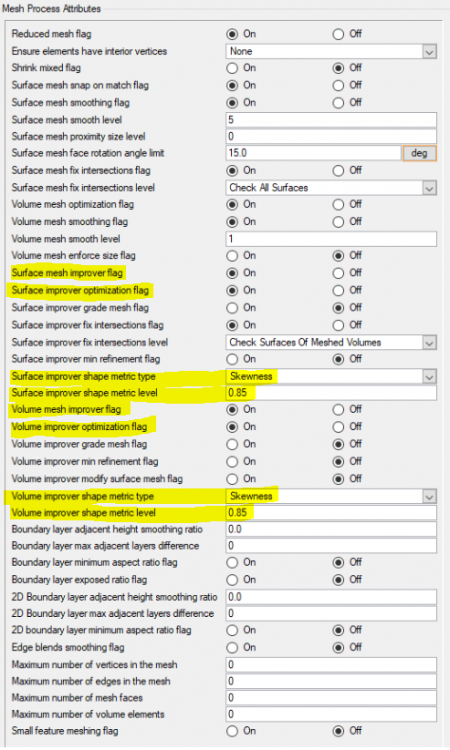Dear Experts,
I have a solar panel consisting of five layers, where two dimensions are much larger than the third dimension (by a factor of about 200-300:1). I have already meshed the component very fine in the plane and get the following statistics from AcuMeshSim:

As a setting I tried the following options to minimize the skewness of the elements:
<?xml version="1.0" encoding="UTF-8"?>
Additionally I tried the option Surface Mesh Proximity Size Level with values of 1-3, but my PC does not seem to have the necessary computing capability for this.
I have already read that AcuSolve is very generous in terms of element quality and focuses more on the distribution of the nodes.
If no big temperature gradients are expected, one could estimate if the existing element quality is sufficient or not?
If not, which options could I try?
Thanks in advance!
<?xml version="1.0" encoding="UTF-8"?>
<?xml version="1.0" encoding="UTF-8"?>